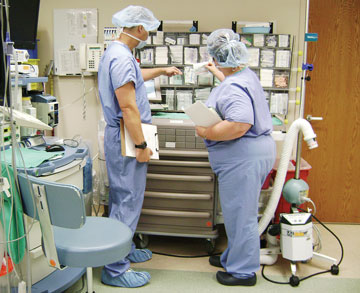Accreditation is more than a simple stamp of approval. Sure, accredited facilities meet nationally recognized quality measures, implement evidence-based clinical practices and adhere to rigorous standards of safe patient care, but the true benefits stem from the process itself. Copper Ridge Surgery Center in Traverse City, Mich., has been accredited since opening its doors in 2004 and must seek reaccreditation every three years. "Going through the process is absolutely a tool for continuous process improvement," says Tina Piotrowski, MBA, BSN, RN, CASC, the facility's CEO. "It enables you to constantly assess your practices to see if they meet the standards. You then have an opportunity to improve areas where you fall short."
Ms. Piotrowski says it's important to immediately fix the deficits a surveyor observes. "Remedy them as soon as possible," she explains. "During your next reaccreditation survey, the surveyor will look back at the previous survey's notes and zero in on the opportunities for improvement to make sure they were taken care of."
Ms. Piotrowski says her staff will typically start to prepare for reaccreditation about a year in advance. "Shortly after a survey is completed, you receive your findings and the decision letter," she says. "In addition, you receive a timeline for preparing for reaccreditation."
Review the latest standards and monitor new or revised directives in order to remain in compliance, recommends Ms. Piotrowski. "Try to be survey-ready all the time," she says. "That way, you can constantly determine if your center needs to conduct a mock survey, which is a helpful exercise, especially if you've implemented new protocols or added new staff members who haven't been through the survey process."
Preparing for a surveyor's visit is not a job for procrastinators or a responsibility one staff member can handle. "Designate a point person to lead an accreditation committee," says Ms. Piotrowski. "Pull a leadership team together that meets every few weeks and determine who's going to take ownership in making sure the staff and facility comply with the standards noted in each chapter of the accreditor's manual." Ms. Piotrowski notes that her facility's committee is not made up of only managers and supervisors — team members from different departments participate in the meetings. "It's important to involve frontline staff, so they can help revise policies and procedures," she says.
.svg?sfvrsn=be606e78_3)


.svg?sfvrsn=56b2f850_5)